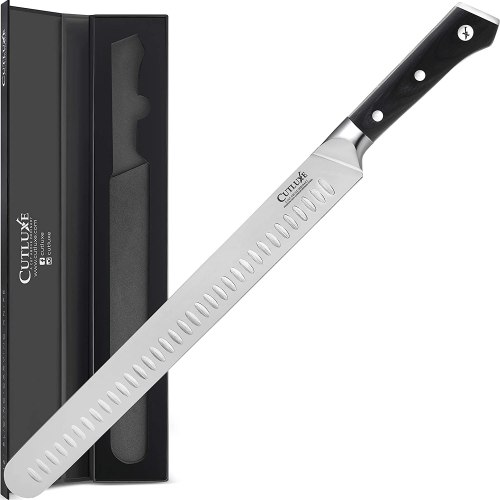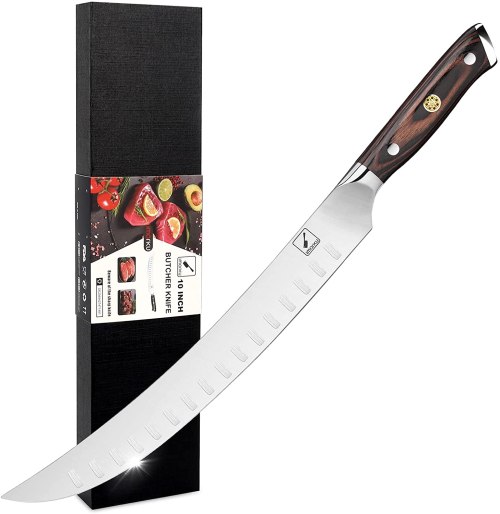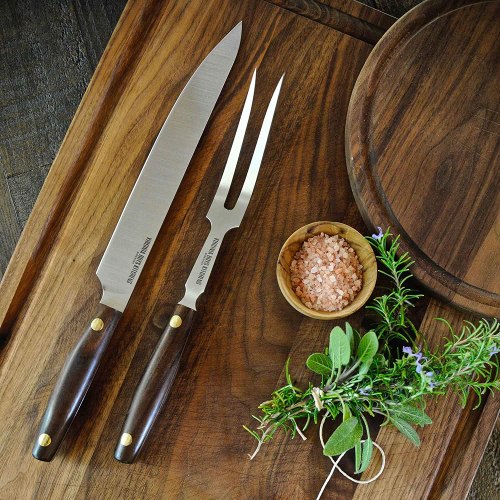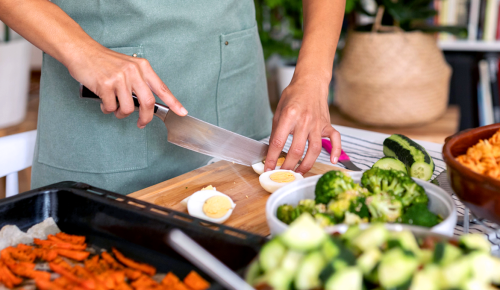Our editors independently select these products. Making a purchase through our links may earn Well+Good a commission
There’s a moment at Thanksgiving dinner, before everyone starts passing around the mashed potatoes and green bean casserole, where all eyes are on the host. After a full day spent in the kitchen (or for some, days), it’s the very last part of meal prep: carving the turkey.
Experts in This Article
Institute of Culinary Education graduate and chef
It’s a high-stakes job. After all, the holiday is nicknamed Turkey Day. No one is looking over your shoulder as you plate the deviled eggs or take the cranberry sauce out of the can, but slicing the meal’s main protein is a whole other matter. It’s exactly why you need a good carving knife. (No, any old knife stabbed into your knife set won’t exactly do.) If you don’t have one yet, don’t worry, Institute of Culinary Education graduate and professional chef Adrienne Cheatham has some tips for exactly what to look for when it comes to buying the best carving knives.
“The main thing to look for when buying a carving knife is that it has a long blade,” Cheatham says. This is important, she says, because is will allow you to slice the turkey in long, graceful strokes rather than shorter ones that can break up the meat. “The shorter strokes make it look like the meat’s been chewed on,” she says.
Cheatham says that some carving knives have a long, thin blade while others have a blade that’s a bit thicker. She says that it doesn’t matter which one you go for and that it’s more of a personal preference. “The thicker carving knife can come in handy for heartier meat, like brisket or pot roast. A thinner blade is good for delicate foods, like fish. Either will work for turkey,” she says. With that in mind, think about what types of food you cook most often so you’ll get good use out of your carving knife the other 364 days of the year.
Best Carving Knives
Cutluxe Carving Knife — $45.00
A 12-inch knife made of German steel, this knife is great for slicing turkey and tougher proteins.
Dalstrong Carving Knife Set — $100.00
Besides a 9-inch carving knife made from German steel, this set also includes a fork and honing rod, which hones the edges of a slightly dull blade.
Imarku Carving Knife — $60.00
If you’re looking for a carving knife that can slice delicate fish just as efficiently as turkey, this Japanese knife will do just the trick.
Virginia Boys Kitchens 2-Piece Carving Set — $175.00
Made with steel blades and walnut handles, this set is made to last. The V-shape knife helps steady the meat while the carving knife smoothly slices through.
As for what to keep in mind when you’re actually doing the carving, Cheatham says to make sure to place the tip of the knife at 9 o’clock, touching the meat with the very back of the knife. “Then, slice down and back in a smooth, downward motion toward the tip,” she says.
After you’re done carving and once the meal is finished, clean your carving knife just like you would a chef’s knife: making sure you dry it completely after washing it so it doesn’t rust. “This will also keep the knife nice and sharp,” she says.
Once you have your carving knife, you’ll be excited to put it to use. This is your moment to relish, no matter how you slice it.
Oh hi! You look like someone who loves free workouts, discounts for cutting-edge wellness brands, and exclusive Well+Good content. Sign up for Well+, our online community of wellness insiders, and unlock your rewards instantly.
Sign Up for Our Daily Newsletter
Get all the latest in wellness, trends, food, fitness, beauty, and more delivered right to your inbox.
Got it, you've been added to our email list.















